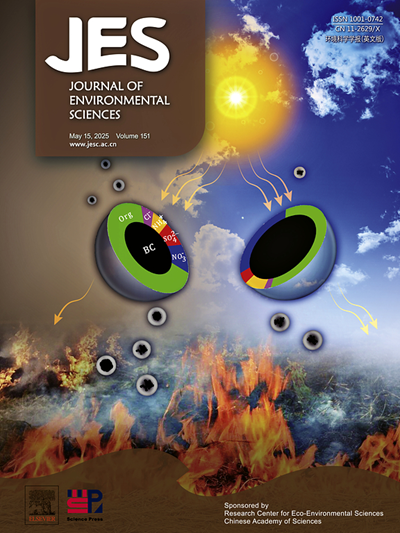Water level fluctuations shape phytoplankton community in the Xiangxi Bay from Three Gorges Reservoir
IF 5.9
2区 环境科学与生态学
Q1 ENVIRONMENTAL SCIENCES
引用次数: 0
Abstract
Water level fluctuations (WLFs) constituted a dominant factor controlling the structure and function of freshwater ecosystems but the mechanism of WLFs on phytoplankton community structure was still unknown. We investigated the characteristics of phytoplankton community structure in Xiangxi Bay from January 2017 to December 2020. Results indicated water level (WL) of the Three Gorges Reservoir was divided into four distinct stages: the decreasing stage (DS), the low water level stage (LS), the storage stage (SS), and the high water level stage (HS). Notably, Cyanophyta predominated during the LS, with Microcystis sp. being the dominant species. Bacillariophyta was predominant in other three WL stages, with Melosira sp. and Cyclotella sp. as the dominant species. The highest biomass appeared in LS, whereas the lowest appeared in HS. Moreover, alpha diversity appeared to be lower in both HS and LS compared to DS and SS. Redundancy analysis showed WL as the key driver of phytoplankton community. Partial least squares path model analyses demonstrated that WL not only altered chemical factors (path coefficient = -0.62, P < 0.01), thereby leading to changes in phytoplankton biomass (path coefficient = 0.56, P < 0.01), but also changed the physical factors (path coefficient = -0.69, P < 0.01) and consequently had an impact on phytoplankton biomass (path coefficient = 0.33, P < 0.01). Furthermore, WL influenced phytoplankton diversity by altering chemical and physical factors. In conclusion, WL was an important factor influencing phytoplankton community, which implied that reservoir operation was the potential strategy to regulate phytoplankton communities.

三峡库区香溪湾水位变化对浮游植物群落的影响
水位波动是控制淡水生态系统结构和功能的主导因素,但水位波动对浮游植物群落结构的影响机制尚不清楚。研究了2017年1月- 2020年12月湘溪湾浮游植物群落结构特征。结果表明:三峡库区水位可分为4个阶段:下降阶段(DS)、低水位阶段(LS)、蓄水阶段(SS)和高水位阶段(HS)。值得注意的是,在LS期间,蓝藻属占优势,微囊藻属是优势种。其余3个阶段均以硅藻门为主,优势种为Melosira sp.和Cyclotella sp.。LS的生物量最高,HS的生物量最低。此外,高海拔和低海拔浮游植物群落的α多样性明显低于高海拔和低海拔浮游植物群落。偏最小二乘路径模型分析表明,WL不仅改变了化学因子(路径系数= -0.62,P <;0.01),从而导致浮游植物生物量的变化(通径系数= 0.56,P <;0.01),但也改变了物理因素(通径系数= -0.69,P <;0.01),进而对浮游植物生物量产生影响(通径系数= 0.33,P <;0.01)。WL通过改变化学和物理因子影响浮游植物多样性。综上所述,WL是影响浮游植物群落的重要因素,水库调度是调控浮游植物群落的潜在策略。
本文章由计算机程序翻译,如有差异,请以英文原文为准。
求助全文
约1分钟内获得全文
求助全文
来源期刊

Journal of Environmental Sciences-china
环境科学-环境科学
CiteScore
13.70
自引率
0.00%
发文量
6354
审稿时长
2.6 months
期刊介绍:
The Journal of Environmental Sciences is an international journal started in 1989. The journal is devoted to publish original, peer-reviewed research papers on main aspects of environmental sciences, such as environmental chemistry, environmental biology, ecology, geosciences and environmental physics. Appropriate subjects include basic and applied research on atmospheric, terrestrial and aquatic environments, pollution control and abatement technology, conservation of natural resources, environmental health and toxicology. Announcements of international environmental science meetings and other recent information are also included.
 求助内容:
求助内容: 应助结果提醒方式:
应助结果提醒方式:


